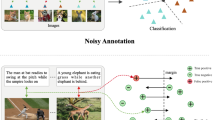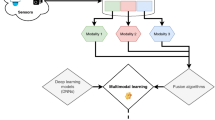Abstract
In unsupervised transfer learning, it is extremely valuable to effectively extract knowledge from the vast amount of untagged data that exists by utilizing tagged data from other similar databases. In general, the data in the real world often resides in the low-dimensional manifold embedded in the high-dimensional environment space. However, the current subspace transfer learning methods do not consider the nonlinear geometry structure inside the data, so the local similarity information between the data may be lost in the learning process. In order to improve this respect, we propose a new subspace transfer learning algorithm, namely Laplacian Regularized Low-Rank Sparse Representation Transfer Learning (LRLRSR-TL). After introducing the low-rank representation and sparse constraints, the method incorporates Laplacian regularization term to represent the global low-dimensional structure and capture the inherent nonlinear geometry information of the data. Experimental investigation conducted based on five different cross-domain visual image datasets shows that the proposed method has outstanding performance compared with several state-of-the-art transfer learning methods.


source data



Similar content being viewed by others
References
Shao M, Kit D, Fu Y (2014) Generalized transfer subspace learning through low-rank constraint. Int J Comput Vis 109:74–93
Jhuo I-H, Liu D, Lee D, Chang S-F (2012) Robust visual domain adaptation with low-rank reconstruction. In: 2012 IEEE Conference on computer vision and pattern recognition, 2012, pp 2168–2175
Zhu F, Shao L (2014) Weakly-supervised cross-domain dictionary learning for visual recognition. Int J Comput Vis 109:42–59
Deng Z, Jiang Y, Chung F-L, Ishibuchi H, Wang S (2012) Knowledge-leverage-based fuzzy system and its modeling. IEEE Trans Fuzzy Syst 21:597–609
Deng Z, Jiang Y, Choi K-S, Chung F-L, Wang S (2013) Knowledge-leverage-based TSK fuzzy system modeling. IEEE Trans Neural Netw Learn Syst 24:1200–1212
Shao L, Zhu F, Li X (2014) Transfer learning for visual categorization: a survey. IEEE Trans Neural Netw Learn Syst 26:1019–1034
Yao y, Doretto G (2010) Boosting for transfer learning with multiple sources. In: 2010 IEEE Computer Society Conference on computer vision and pattern recognition, 2010, pp 1855–1862
Gong B, Shi Y, Sha F, Grauman K (2012) Geodesic flow kernel for unsupervised domain adaptation. In: 2012 IEEE Conference on computer vision and pattern recognition, 2012, pp 2066–2073
Gopalan R, Li R, Chellappa R (2011) Domain adaptation for object recognition: an unsupervised approach. In: 2011 International Conference on computer vision, 2011, pp 999–1006
Saenko K, Kulis B, Fritz M, Darrell T (2010) Adapting visual category models to new domains. In:2010 European Conference on computer vision, 2010, pp 21–226
Si S, Tao D, Geng B (2009) Bregman divergence-based regularization for transfer subspace learning. IEEE Trans Knowl Data Eng 22:929–942
Duan L, Xu D, Chang S-F (2012) Exploiting web images for event recognition in consumer videos: A multiple source domain adaptation approach. In: 2012 IEEE Conference on computer vision and pattern recognition, 2012, pp 1338–1345
Duan L, Xu D, Tsang IW-H, Luo J (2011) Visual event recognition in videos by learning from web data. IEEE Trans Pattern Anal Mach Intell 34:1667–1680
Xu Y, Zhang D, Yang J, Yang J-Y (2011) A two-phase test sample sparse representation method for use with face recognition. IEEE Trans Circuits Syst Video Technol 21:1255–1262
Xu Y, Fang X, Li X, Yang J, You J, Liu H et al (2014) Data uncertainty in face recognition. IEEE Trans Cybern 44:1950–1961
Xu Y, Fang X, Wu J, Li X, Zhang D (2015) Discriminative transfer subspace learning via low-rank and sparse representation. IEEE Trans Image Process 25:850–863
Zhang T, Ghanem B, Liu S, Ahuja (2012)Low-rank sparse learning for robust visual tracking. In: 2012 European Conference on computer vision, 2012, pp 470–484
Xu J, Deng C, Gao X, et al (2017) Predicting Alzheimer's disease cognitive assessment via robust low-rank structured sparse model. In: Twenty-sixth International Joint Conference on artificial intelligence, 2017, pp 3880–3886
He X, Yan S, Hu Y, Niyogi P, Zhang H-J (2005) Face recognition using laplacianfaces. IEEE Trans Pattern Anal Mach Intell 27:328–340
Cai D, He X, Han J, Huang TS (2010) Graph regularized nonnegative matrix factorization for data representation. IEEE Trans Pattern Anal Mach Intell 33:1548–1560
Lu X, Wang Y, Yuan Y (2013) Graph-regularized low-rank representation for destriping of hyperspectral images. IEEE Trans Geosci Remote Sens 51:4009–4018
Zheng M, Bu J, Chen C, Wang C, Zhang L, Qiu G et al (2010) Graph regularized sparse coding for image representation. IEEE Trans Image Process 20:1327–1336
Gao S, Tsang IW-H, Chia L-T (2012) Laplacian sparse coding, hypergraph laplacian sparse coding, and applications. IEEE Trans Pattern Anal Mach Intell 35:92–104
He X, Cai D, Shao Y, Bao H, Han J (2010) Laplacian regularized gaussian mixture model for data clustering. IEEE Trans Knowl Data Eng 23:1406–1418
Jeribi A (2015) Spectral graph theory Spectral. Theory and applications of linear operators and block operator matrice, pp 413–439
Yin M, Gao J, Lin Z (2015) Laplacian regularized low-rank representation and its applications. IEEE Trans Pattern Anal Mach Intell 38:504–517
Côté-Allard U, Fall CL, Drouin A, Campeau-Lecours A, Gosselin C, Glette K et al (2019) Deep learning for electromyographic hand gesture signal classification using transfer learning. IEEE Trans Neural Syst Rehabil Eng 27:760–771
Li Y, Shen L (2018) cC-GAN: A robust transfer-learning framework for HEp-2 specimen image segmentation. IEEE Access 6:14048–14058
Shin H-C, Roth HR, Gao M, Lu L, Xu Z, Nogues I et al (2016) Deep convolutional neural networks for computer-aided detection: CNN architectures, dataset characteristics and transfer learning. IEEE Trans Med Imaging 35:1285–1298
Turki T, Wei Z, Wang JT (2018) A transfer learning approach via procrustes analysis and mean shift for cancer drug sensitivity prediction. J Bioinform Comput Biol 16:1840014
Yu X, Chu Y, Jiang F, Guo Y, Gong D (2018) SVMs classification based two-side cross domain collaborative filtering by inferring intrinsic user and item features. Knowl-Based Syst 141:80–91
Lu J, Behbood V, Hao P, Zuo H, Xue S, Zhang G (2015) Transfer learning using computational intelligence: a survey. Knowl-Based Syst 80:14–23
Weiss K, Khoshgoftaar TM, Wang DD (2016) A survey of transfer learning. J Big Data 3:9
Wright J, Ganesh A, Rao S, Peng Y, Ma Y (2009) Robust principal component analysis: Exact recovery of corrupted low-rank matrices via convex optimization. In: Twenty-second International Conference on neural informationprocessing, 2009, pp 2080–2088
Chen C-F, Wei C-P, Wang Y-CF (2012) Low-rank matrix recovery with structural incoherence for robust face recognition. In: 2012 IEEE Conference on computer vision and pattern recognition, 2012, pp 2618–2625
Liu G, Lin Z, Yan S, Sun J, Yu Y, Ma Y (2013) Robust recovery of subspace structures by low-rank representation. IEEE Trans Pattern Anal Mach Intell 35:171–184
Liu G, Lin Z, Yu y (2010) Robust subspace segmentation by low-rank representation. In: Twenty-seventh international conference on international conference on machine learning, pp 663–670
Liu G, Yan S (2011) Latent low-rank representation for subspace segmentation and feature extraction. In: 2011 International Conference on computer vision, 2011, pp 1615–1622
Liu G, Xu H, Yan S (2012) Exact subspace segmentation and outlier detection by low-rank representation. In: Artificial intelligence and statistics, 2012, pp 703–711
Ding Z, Ming S, Fu Y (2014) Latent low-rank transfer subspace learning for missing modality recognition. In: Twenty-eighth AAAI Conference on artificial intelligence, 2014, pp 1192–1198
Shao M, Castillo C, Gu Z, Fu Y (2012) Low-rank transfer subspace learning. In: 2012 IEEE International Conference on data mining, 2012, pp 1104–1109
Wang J, Feng W, Chen Y, Yu H, Huang M, Yu PS (2018) Visual domain adaptation with manifold embedded distribution alignment. In: 2018 ACM Multimedia Conference on multimedia conference, 2018, pp 402–410
Xiao T, Liu P, Zhao W et al (2019) Structure preservation and distribution alignment in discriminative transfer subspace learning. Neurocomputing 337:218–234
Donoho DL (2006) Compressed sensing. IEEE Trans Inf Theory 52:1289–1306
Kim H, Park H (2008) Nonnegative matrix factorization based on alternating nonnegativity constrained least squares and active set method. SIAM J Matrix Anal Appl 30:713–730
Wright J, Ma Y, Mairal J, Sapiro G, Huang TS, Yan S (2010) Sparse representation for computer vision and pattern recognition. Proc IEEE 98:1031–1044
Lin Z, Chen M, Ma Y (2010) The augmented lagrange multiplier method for exact recovery of corrupted low-rank matrices. arXiv preprint arXiv:1009.5055, 2010.
Chung FRK (1997) Spectral graph theory. In: CBMS regional conference series in mathematics, vol 92
Belkin M, Niyogi P (2002) Laplacian eigenmaps and spectral techniques for embedding and clustering. In: Fourteenth International Conference on neural information processing systems, 2002, pp 585–591
Magnus JR, Neudecker H (1999) Matrix differential calculus with applications in statistics and econometrics, revised ed. Wiley, Chichester
Cai j-F, Candes EJ, Shen Z (2008) A singular value thresholding algorithm for matrix completion. arXiv preprint arXiv:0810.3286, 2008
Eckstein J, Bertsekas DP (1992) On the Douglas—Rachford splitting method and the proximal point algorithm for maximal monotone operators. Math Progr 55:293–318
Pan SJ, Tsang IW, Kwok JT, Yang Q (2010) Domain adaptation via transfer component analysis. IEEE Trans Neural Netw 22:199–210
Long M, Wang J, Ding G, Sun J, Yu PS (2013) Transfer feature learning with joint distribution adaptation. In: 2013 IEEE International Conference on computer vision, 2013, pp 2200–2207
Zhang J, Li W, Ogunbona P (2017) Joint geometrical and statistical alignment for visual domain adaptation. In: 2017 IEEE Conference on computer vision and pattern recognition, 2017, pp 1859–1867
Chong W, Blei D, Li F-F (2009) Simultaneous image classification and annotation. In: 2009 IEEE Conference on computer vision and pattern recognition, 2009, pp 1903–1910
Acknowledgements
This work is supported by the National Key R&D Program of China (Grant Nos. 2018YFC2001600, 2018YFC2001602), and the National Natural Science Foundation of China under Grant no. 61473150.
Author information
Authors and Affiliations
Corresponding author
Additional information
Publisher's Note
Springer Nature remains neutral with regard to jurisdictional claims in published maps and institutional affiliations.
Rights and permissions
About this article
Cite this article
Guo, L., Dai, Q. Laplacian regularized low-rank sparse representation transfer learning. Int. J. Mach. Learn. & Cyber. 12, 807–821 (2021). https://doi.org/10.1007/s13042-020-01203-6
Received:
Accepted:
Published:
Issue Date:
DOI: https://doi.org/10.1007/s13042-020-01203-6




